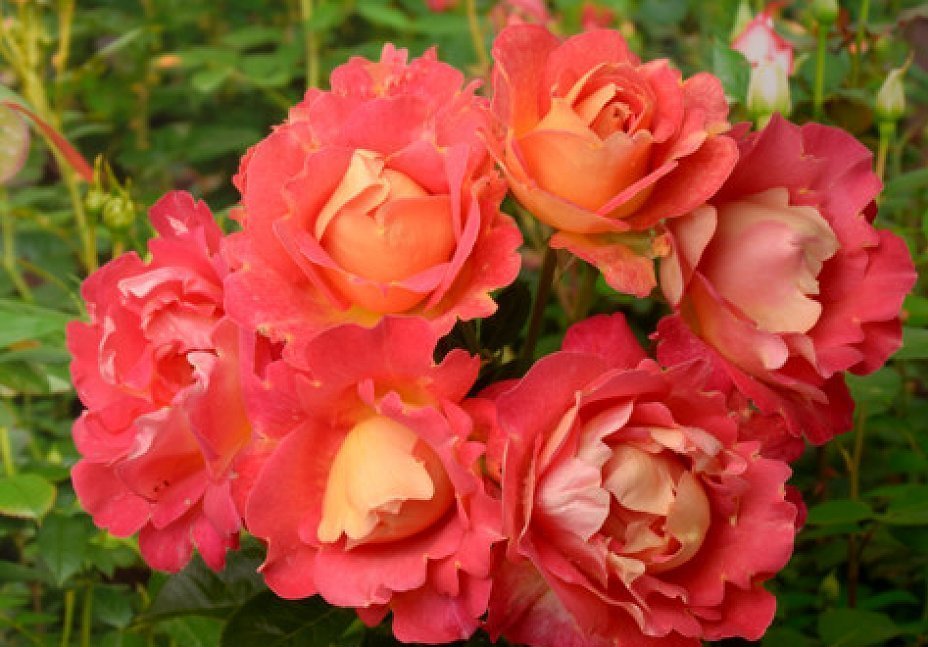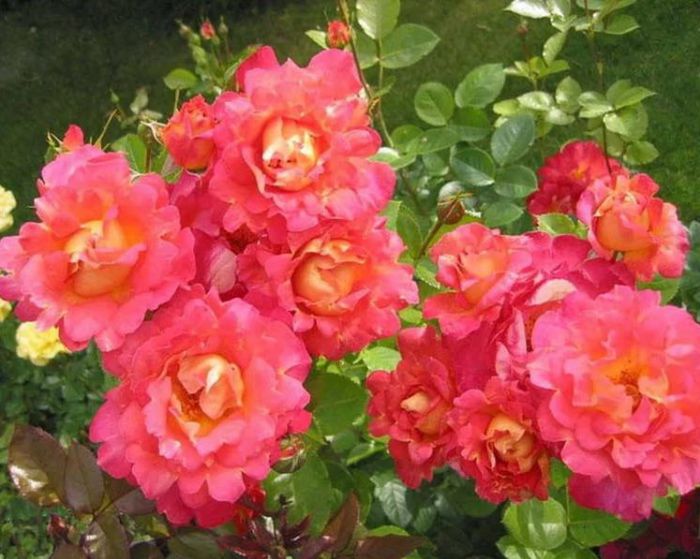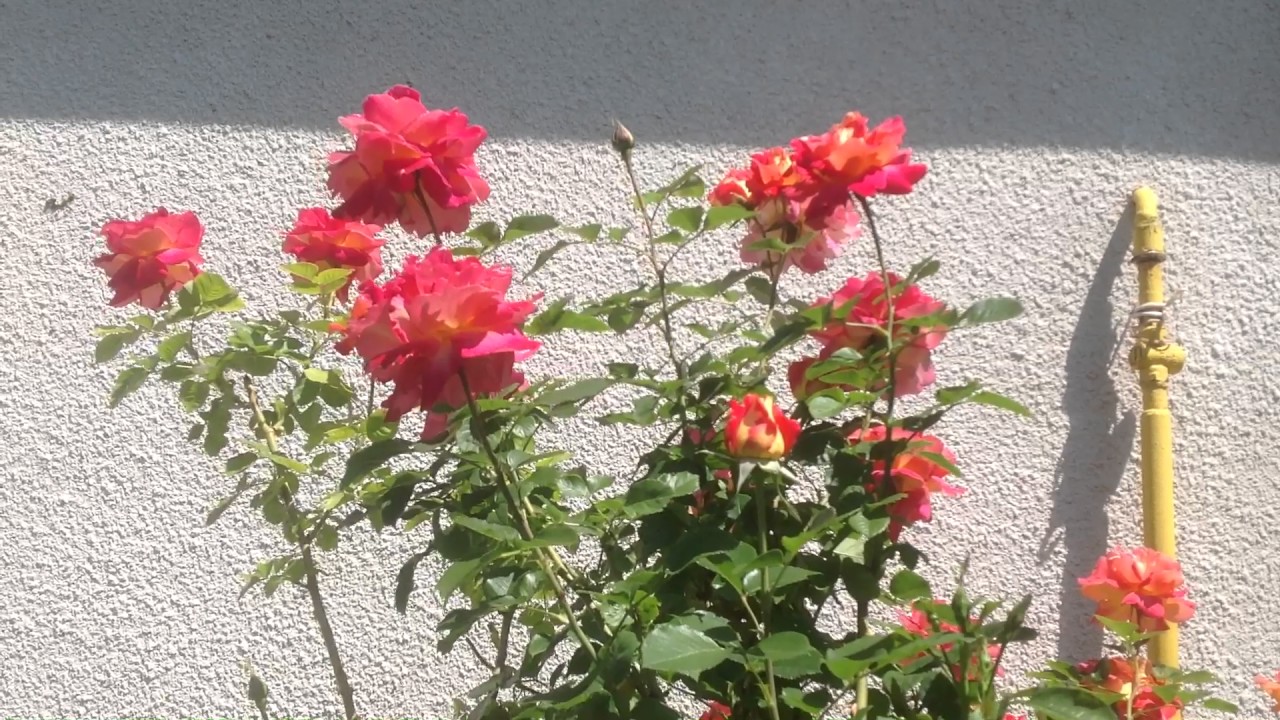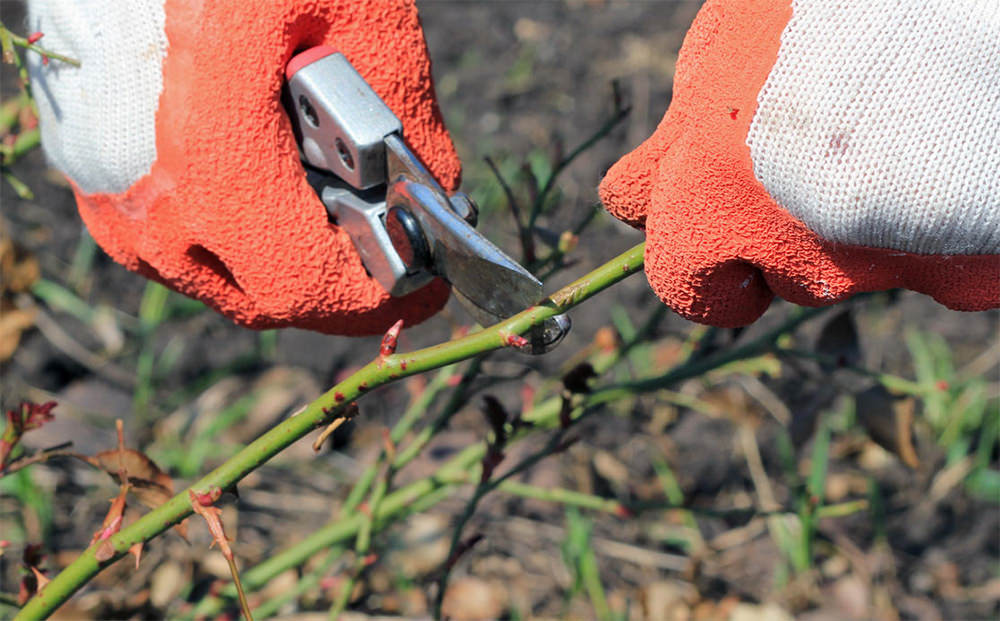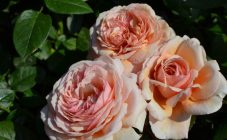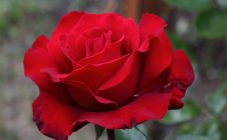Content:
Climbing or shrub roses are a subspecies of rose hips and some varieties that, thanks to their very long stems, can twine around artificial decorative objects, for example, arches made of fittings. This feature makes it possible to use plants in the exterior decor, decorating courtyards and courtyards.
One of the varieties of hybrid climbing roses is the Harlequin Decor. This is the original variety, classified as a shrub garden plant. Its main feature is that flowers can change color. The name was given in honor of the old circus performers, whose feature was a quick change of appearance on stage.
In the breeding of the variety, crossed plants of the Zambra and Suspence species were used, which were crossed with the subspecies Arthur Bell. The plant was bred in 1986 at Meilland, France. Hence the alternative names of the variety are MEIzourayor rose, Decor Arlequin and Meilland Decor Arlequin.
Description Rose Decor Harlequin
Climbing rose Harlequin is distinguished by its original color palette. The buds are usually tinged with a pink-orange hue, while the outside of the flowers is usually golden or orange. If the bud is fully open, the petals turn crimson. The core is usually yellow or slightly orange. The texture of the petals is similar in feel to terry cloth. The foliage of the bush plant is leathery, bright green. On the texture of the petal, multiple stripes of small sizes can pass.
A fully grown bush can be up to a meter wide. And in height the bush exceeds 170 cm. The largest bushes can reach 2-2.5 meters. On one bush, many branches are formed that grow quickly. Due to the rapid growth when caring for the Harlequin rose variety, regular pruning must be carried out so that the shoots of the thorny plant do not fill the entire area.
On a tall bush, many multi-colored buds are formed. Up to 5 buds can appear on one branch, each of which includes up to 30 petals. The bud diameter can exceed 12 cm. Flowers are arranged singly or form multiple inflorescences. That is why the climbing rose Harlequin belongs to the varieties that bloom profusely.
Care and cultivation of Harlequin rose varieties
The plant propagates through cuttings. To do this, you need to prepare a small stalk during the formation of the bud. It is best to cut it out before the petals fall off. A stalk with a green base is cut to maintain the quality of the variety. It is best to plant it in the spring. It is necessary for the stalk to take root, in which case a mother bush will grow from the soil, which has abundant flowering.
If you cut the seedling before bud formation, the plant will not be ripe enough and the nutrients in the stem will be wasted in increasing the size of the cutting. This process will gradually take away all the nutrients, as a result of which the bush will not grow.
In order for the bush to grow and delight its owner, the cutting must have a green base of sufficient size. It is best to plant a small seedling, no more than 1 cm wide.When cutting the stem, cut at an acute angle, slightly below the last point.
If trimming occurs from the top, then trim one centimeter above the last point. One seedling should have 3-4 internodes. Next, you need to clean the cut, cut off the thorns, leaf plates. On the upper part of the cutting, the leaves are shortened by a third of the total size.
The day before planting, you need to place the seedling in a solution with properties that enhance root formation. At the time of planting, it is best to use a nutritious soil substrate: river sand, leafy soil, humus and sod soil in a ratio of 1: 1: 2: 4. Add wood ash to the substrate.
The cutting is planted in the ground in a hole up to 15 cm in size. The prepared wood-soil mixture is poured inside, the cutting is planted and covered with the remaining substrate on top. You need to stick the seedling into the ground about 2 centimeters, at an acute angle. After planting, be sure to water the soil with a weak solution of potassium permanganate. Next, you need to cover the stalk with a plastic bottle to simulate greenhouse conditions for the plant, which will accelerate growth.
Care
All pink plants are quite difficult to grow and care for. And the Harlequin rose is no exception. Shrub care recommendations:
- It is best to plant the seedling in fertile soil. Heavy soil containing a high percentage of sand or clay will prevent the plant from growing to full size. It is also undesirable to choose a site where groundwater flows at a shallow depth.
- With prolonged drought and lack of watering, the death of the entire plant is possible. To prevent this, you need to water the area around the bush from time to time.
- You will need to regularly loosen the soil around the stem. This is necessary to retain moisture in the soil. However, due to the shallow root system, too deep work can damage the rootstock of the seedling or bush. If damage is caused to the root system of a plant, fungal diseases, a decrease in growth rates or the death of a bush are possible.
- Instead of regularly loosening the soil, you can use mulching.
- Fertilizers must be applied before wintering. If you do this on time, the bush will have time to stock up on nutrients by winter and withstand the cold.
Pruning
For successful cultivation, you need to carry out several pruning: sanitary, anti-aging and formative.
Sanitation is carried out at any time of the year. During execution, branches that have broken due to wind or other damage are cut off.
Rejuvenating is carried out before wintering, in autumn or early spring. It is necessary to cut off too old or weak branches, shoots that have already faded. Before winter, young growth is removed, taking resources from adult branches.
Forming is carried out in the spring, preventing the overgrowth of the bush in breadth. The stretching vines are cut off, the branches growing inside the bush are removed.
Pros and cons of the variety
The list of positive characteristics includes:
- large plant sizes;
- fast growth rates;
- variable color;
- a large number of flowers on the branch;
- resistance to cold;
- strong immunity;
Disadvantages:
- too fast growth leads to the need to constantly prune the plant;
- difficult cultivation and care.
Rose variety Decor Harlequin is a type of shrub roses that grows quickly and has an interesting appearance.Its characteristic features include the ability to winter at any temperature, multi-colored flowers on a long stem, and rapid expansion in breadth. Caring for this green beauty will require patience, skill and time, but if a gardener decides to purchase and breed a variety in his backyard, then with proper cultivation, the rose will delight for a long time with its multi-colored buds.
